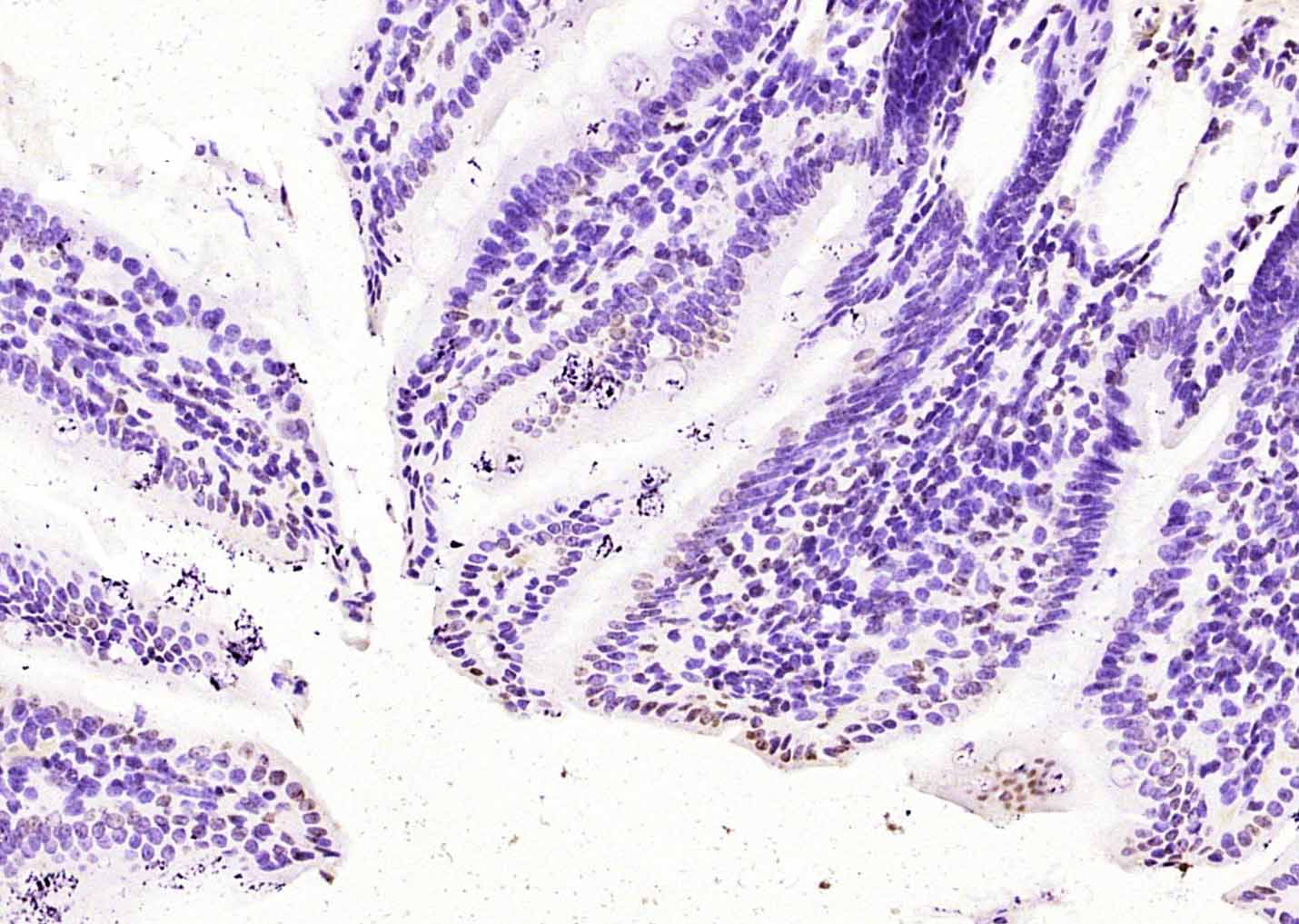
Rabbit Anti-UBE2W antibody
hUBC 16; hUBC16; Probable ubiquitin conjugating enzyme E2 W; Probable ubiquitin-conjugating enzyme E2 W; UBE 2W; ube2w; UBE2W_HUMAN; Ubiquitin carrier protein W; Ubiquitin conjugating enzyme 16; Ubiquitin conjugating enzyme E2 W; Ubiquitin conjugating enz
View History [Clear]
Details
Product Name UBE2W Chinese Name Ubiquitin蛋白连接酶W抗体 Alias hUBC 16; hUBC16; Probable ubiquitin conjugating enzyme E2 W; Probable ubiquitin-conjugating enzyme E2 W; UBE 2W; ube2w; UBE2W_HUMAN; Ubiquitin carrier protein W; Ubiquitin conjugating enzyme 16; Ubiquitin conjugating enzyme E2 W; Ubiquitin conjugating enzyme E2W; Ubiquitin protein ligase W; Ubiquitin-protein ligase W; FLJ11011. Research Area Cell biology immunology Signal transduction Epigenetics Immunogen Species Rabbit Clonality Polyclonal React Species Mouse, (predicted: Human, Rat, Chicken, Dog, Pig, Cow, Horse, Rabbit, Sheep, ) Applications ELISA=1:5000-10000 IHC-P=1:100-500 IHC-F=1:100-500 IF=1:50-200 (Paraffin sections need antigen repair)
not yet tested in other applications.
optimal dilutions/concentrations should be determined by the end user.Theoretical molecular weight 17kDa Cellular localization The nucleus Form Liquid Concentration 1mg/ml immunogen KLH conjugated synthetic peptide derived from human UBE2W: 71-151/151 Lsotype IgG Purification affinity purified by Protein A Buffer Solution 0.01M TBS(pH7.4) with 1% BSA, 0.03% Proclin300 and 50% Glycerol. Storage Shipped at 4℃. Store at -20 °C for one year. Avoid repeated freeze/thaw cycles. Attention This product as supplied is intended for research use only, not for use in human, therapeutic or diagnostic applications. PubMed PubMed Product Detail Ubiquitin is an abundant, highly conserved protein found in all eukaryotic cells either free or covalently attached to cellular proteins. Ubiquitination is an important mechanism through which three classes of enzymes act in concert to target short-lived or abnormal proteins for destruction. The three classes of enzymes involved in ubiquitination are the ubiquitin-activating enzymes (E1s), the ubiquitin-conjugating enzymes (E2s) and the ubiquitin-protein ligases (E3s). As an E2 class enzyme, UBE2W (Ubiquitin-conjugating enzyme E2 W), also known as Ubiquitin carrier protein W, is a 151 amino acid that catalyzes the conjugation of ubiquitin to proteins that are meant for lysosomal degradation. Functioning as a homodimer, UBE2W is widely expressed, with highest levels in testis. There are two isoforms of UBE2W that are produced as a result of alternative splicing events.
Function:
Accepts ubiquitin from the E1 complex and catalyzes its covalent attachment to other proteins. Catalyzes monoubiquitination. Involved in degradation of misfolded chaperone substrates by mediating monoubiquitination of STUB1/CHIP, leading to recruitment of ATXN3 to monoubiquitinated STUB1/CHIP, and restriction of the length of ubiquitin chain attached to STUB1/CHIP substrates by ATXN3. After UV irradiation, but not after mitomycin-C (MMC) treatment, acts as a specific E2 ubiquitin-conjugating enzyme for the Fanconi anemia complex by associating with E3 ubiquitin-protein ligase FANCL and catalyzing monoubiquitination of FANCD2, a key step in the DNA damage pathway. In vitro catalyzes 'Lys-11'-linked polyubiquitination.
Subunit:
Homodimer. Interacts with FANCL. Interacts with STUB1/CHIP (By similarity).
Subcellular Location:
Nucleus. Note=In the nucleus, colocalizes with FANCL.
Tissue Specificity:
Widely expressed, with highest expression in brain, liver, pancreas and heart.
Post-translational modifications:
Ubiquitinated in vitro in the presence of FANCL (By similarity).
Similarity:
Belongs to the ubiquitin-conjugating enzyme family.
SWISS:
Q96B02
Gene ID:
55284
Database links:
UniProtKB/Swiss-Prot: Q96B02.1
Product Picture
References (0)
No References
Bought notes(bought amounts latest0)
No one bought this product
User Comment(Total0User Comment Num)
- No comment



 +86 571 56623320
+86 571 56623320
 +86 18668110335
+86 18668110335

